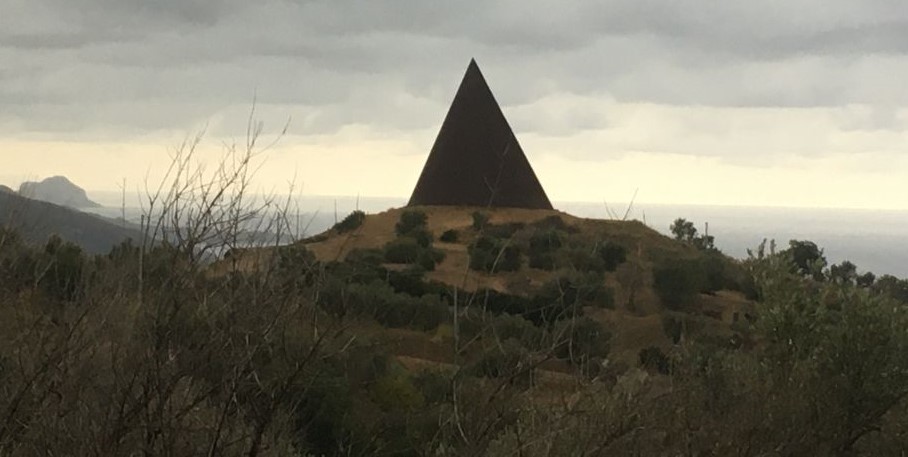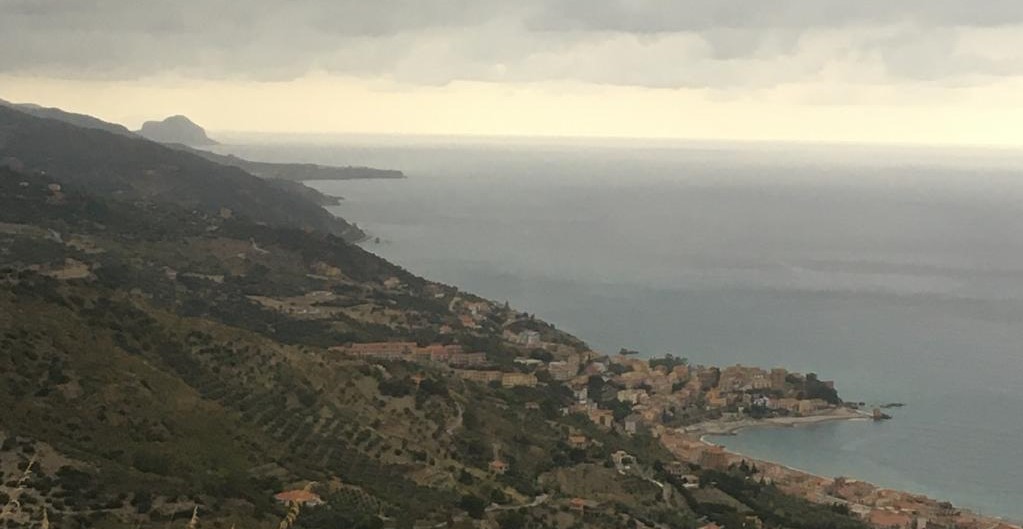Fiumara d'Arte, an open-air museum. In the Messina area, from Castel di Tusa to Mistretta, there is a line on which to move from the past to the present through contemporary works. Antonio Presti's sculpture park project ideally retraces the route of the Tusa river. The intent is enhance the territory through contemporary art. A route that alternates stretches on the coast up to the mountains.
Fiumara d'Arte, a journey through contemporary works
From the vestiges of an ancient settlement del V century you can see "Pyramid -38th parallel". To then encounter installations that bring back ancient memories but reinterpreted with the eyes of contemporaries, like the “Ariadne's Labyrinth". Our journey through time starts from the Atelier sul Mare di Presti, where it stands out "The heretic horse", to then go through Halaesa (Alesa) Arconidea, along the road to Tusa. “It is as if it were a small Pompeii - says the tour guide Marina Di Gristina -. An archaeological area unknown to most. An inhabited center in antiquity and no longer used. Here the modern buildings do not overlap the ancient city ".

This place contains important remains from the Roman era in the context of some less investigated civilizations such as the Sicilian and Sican ones. In 403 BC Arconides, who came from Herbita, founded Halaesa on this hill, two kilometers from the coast. One of the most accredited hypotheses on the birth of the settlement is that Arconides transfers here some of the evacuees who had invaded his city fleeing from the southern areas, bloodied by the war between Dionysius I and the Carthaginians. It will then become an important city in Roman times until it disappeared completely.
The excavations, begun in 1946 and continued, at various times, up to the present day, have brought to light finds and interesting ones kept in the antiquarium built inside an ancient farm, which insists on the ruins of an ancient Benedictine complex built in the Norman. “With the arrival of the Arabs - recalls Di Gristina - the inhabited center will move higher from the hill, until the foundations of what will be the city of Tusa are built. Even today, however, that area is much loved by the inhabitants of Tusa devoted to the Madonna. The church of Santa Maria delle Palate was built there ”.

From "Pyramid -38 ° parallel" to the "Room of a golden boat"
When you arrive in the open countryside in the Alesa area there is a breathtaking view. “From there you can see 'Pyramid - 38th parallel'- adds the guide - created in 2010 in Motta D'Affermo. Towards Tusa instead we find the first work of Fiumara d'Arte assigned by Presti to Pietro Consagra, 'Matter could not be there ', which sees the light in 1986 ". Further along the path of the torrent we arrive at Castel di Lucio, where the mural design was made "Arethusa", on the facade of a police station. The work can still be admired on a hilly landscape "A curve thrown behind time" by Paolo Schiavocampo. Up to Italo Lanfredini's Labyrinth of Ariadne. The path between the mountains reaches inland, in Mistretta, where the "Golden boat room". Once completed, Hidetoshi Nagasawa's conceptual work was hidden from view by a door for 100 years.
A path that amazes the eyes and stimulates the mind. A journey through a territory that is discovered slowly. Which still contains within itself its many treasures.





